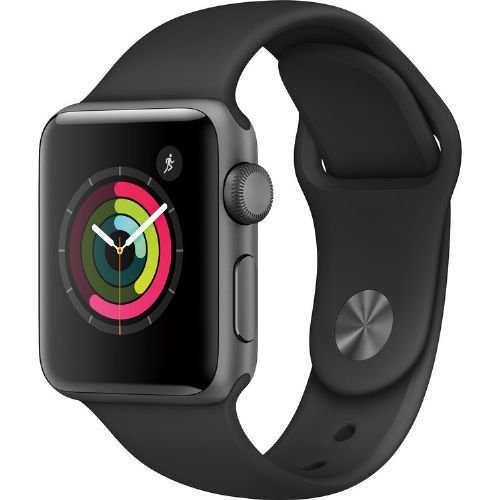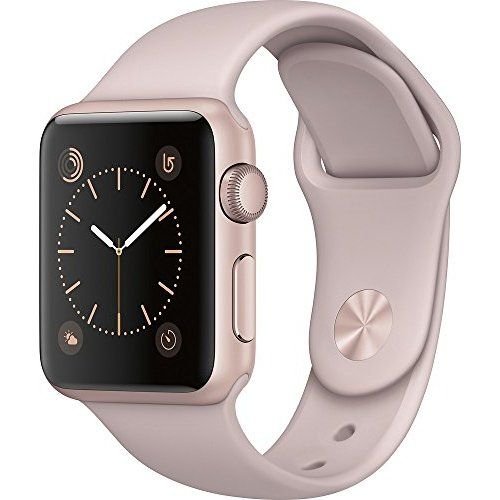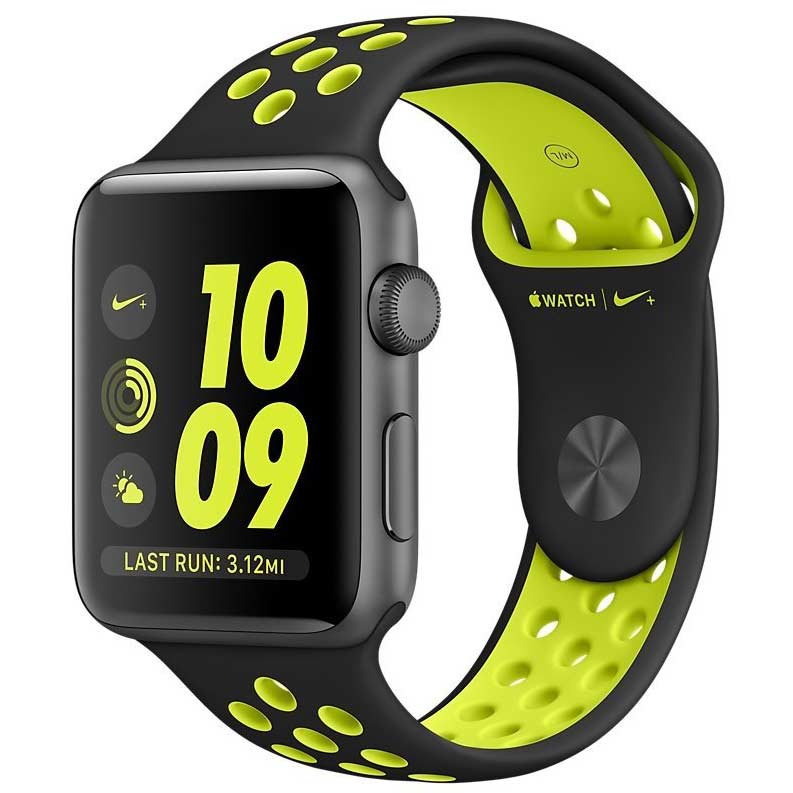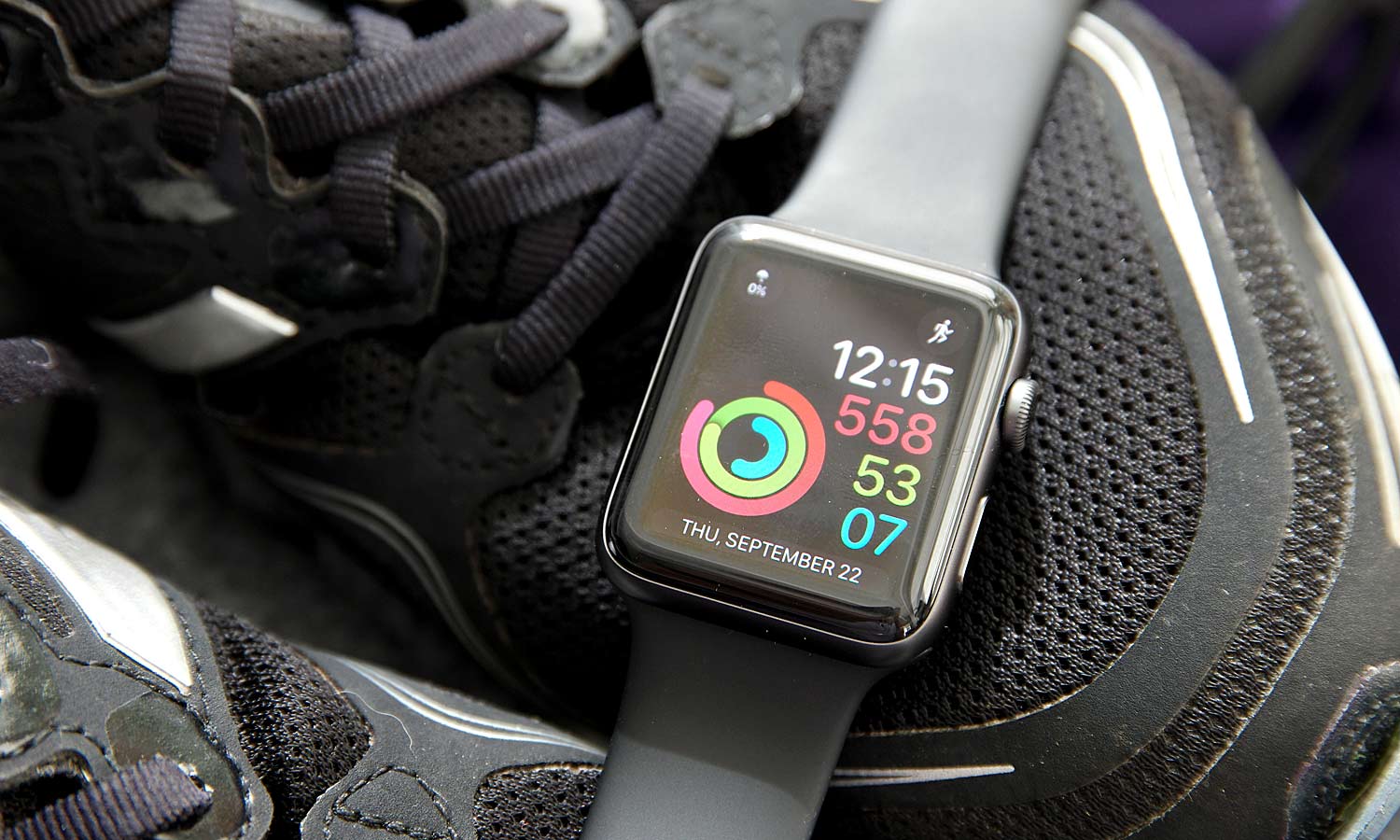
More than two years in, the Apple Watch has changed a lot from its earliest days. It's gone through a few major software revisions, a hardware revision (and a half) and more colorful watch bands than you can shake a pair of iPod socks at. But even after all this time, the Apple Watch — and the smartwatch field as a whole — isn't always well-understood. So here's a rundown of everything you need to know about the Apple's wearable.
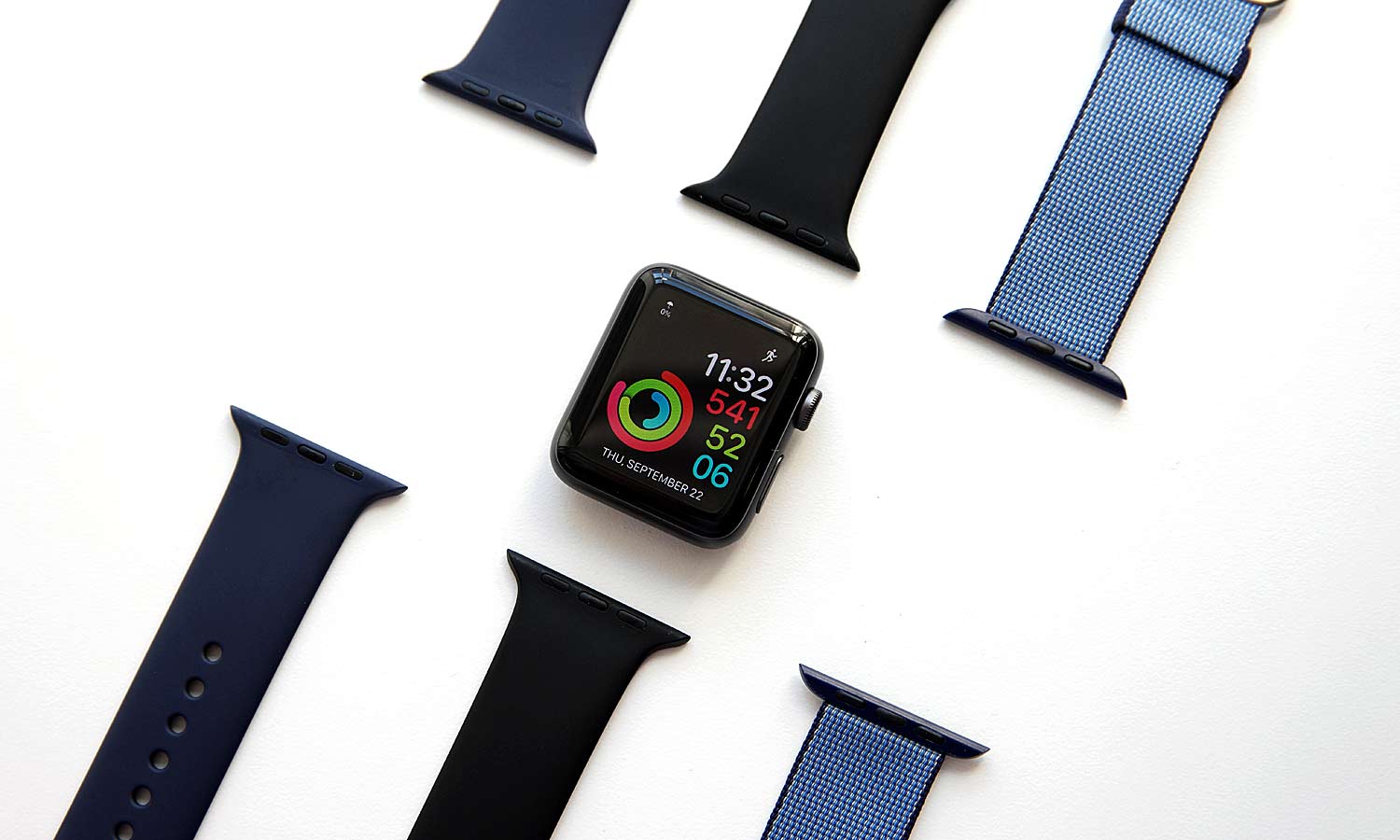
What is the Apple Watch and what does it do?
Like other smartwatches, the Apple Watch can track your fitness activity, deliver notifications to your wrist and give you access to apps. Apple first released its smartwatch in 2015, and while the wearable certainly hasn't matched the success of the iPhone or iPad, the Apple Watch has established itself as the leading smartwatch. That's thanks to the way it handles fitness tracking and its tie-in to Apple's vast network of mobile apps.
Apple Watch Series 1 vs. Series 2: What's the difference?
The Apple Watch is currently available in two versions. Apple Watch Series 1 is a single model that features an aluminum case (in your choice of silver, space gray, gold or rose gold) and sport band.
Apple Watch Series 2 is made up of four separate models: the Apple Watch, which has either an aluminum case with sport band or a stainless steel case (which also has a space-black stainless-steel color option) with sport band or Milanese loop band; the Apple Watch Nike+, an aluminum model with a special Nike Sport Band; the Apple Watch Hermès, a stainless steel case with a choice of Hermès leather bands and additional sport band; and the high-end Apple Watch Edition, which has a ceramic case and comes with a sport band.

MORE: Apple Watch Series 2 Review
Both versions of the Apple Watch feature a dual-core chip (the Series 2 models use a newer one) as well as Bluetooth and Wi-Fi for pairing with an iPhone and connecting to known Wi-Fi networks. The watches also feature a handful of sensors to measure heart rate, acceleration, movement and ambient light. The Series 2 model adds built-in GPS, making it ideal for tasks like tracking a run.
Speaking of fitness activities, while the Series 1 Apple Watch is splash-proof and can survive limited exposure to water, the Series 2 is designed to support swimming and other water activities; it's water resistant to 50 meters.
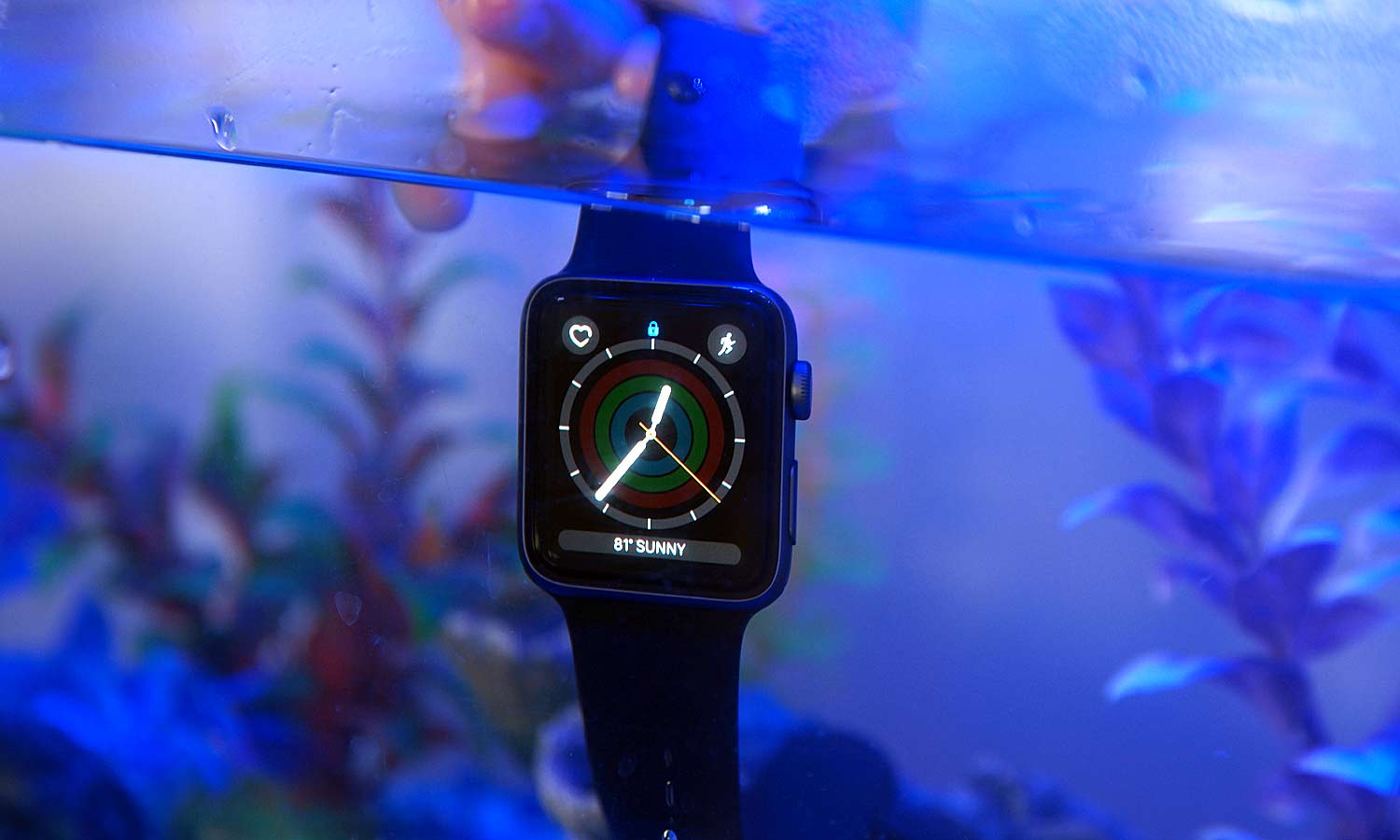
In terms of software, the Apple Watch runs watchOS, which is based on the same foundations as the iPhone and iPad's iOS. The software is largely the same, no matter which of the many models you get. (The Hermès and Nike versions do include custom watch faces.)
How much does the Apple Watch cost?
The least expensive model is the Apple Watch Series 1, which is essentially a slightly revamped version of the original Apple Watch. (Our review of the first Apple Watch will give you a pretty good idea of what to expect from the Series 1 models.) It starts at $269 for a 38mm model and $299 for a 42mm version.
The Series 2 Apple Watch and Apple Watch Nike+ models start at $369 for a 38mm model with an aluminum case, or $399 if you go for the larger, 42mm version. But the price of the former rises depending on which case and band you choose. The stainless steel models go for $549 and $599 for 38mm and 42mm versions, respectively; opt for the silver Milanese Loop, and those prices go up to $649 and $699, while the space-black Milanese Loop costs either $699 or $749, depending on case size.
The Apple Watch Hermès is available in a number of different configurations, depending on which band you opt for. The Hermès watches start at $1,149 with a standard leather strap, but go up to $1,499. Some of the options are available only for 38mm or 42mm models. The Hermès model also features a custom watch face not available on any other Apple Watch.
Finally, the Apple Watch Edition has a white ceramic case that costs either $1,249 for a 38mm model or $1,299 for a 42mm version; it includes a sport band and a magnetic charging dock.
MORE: Smartwatch Buying Guide: Everything You Need to Know
Expect to pay a little more if you're looking to extend your warranty beyond the coverage provided by the standard AppleCare package. AppleCare+ runs between $49 for the least expensive Series 1 model up to $99 for the most expensive Hermès model. On the Apple Watch and Apple Watch Nike+, AppleCare+ will extend the default one year of protection and 90 days of phone support to two years for both; for the Apple Watch Edition and Hermès, you'll get a third year of service and phone support added onto the standard two years of both. In any case, AppleCare+ covers two incidents of accidental damage, which costs $69 for the cheaper models and $79 for the more expensive models.
What does the Apple Watch do?
In addition to telling time, showing stock quotes and weather updates, and functioning as a stopwatch and alarm, there's a whole lot more the Apple Watch can do. Here's a sampling.
Fitness tracking
Thanks the Apple Watch's onboard heart-rate monitor and accelerometer, fitness features have really emerged as a focal point for this device, as the watch can track your fitness activity, including calories burned and workout intensity. The Watch's Activity app will even track something as simple as standing after a period of sitting, with the app encouraging you to meet daily goals for exercise and moving about. While the Apple Watch Series 1 will need to connect to your phone to get GPS data like distance traveled and pace, the Series 2 models now include built-in GPS, so you can go for a run and leave your phone behind.
The heart-rate monitor inside the Apple Watch isn't a continuous one, though Apple says the monitor will constantly record your heart rate during workouts; otherwise, it reads your heart rate periodically throughout the day, when you're still. You can also manually check your heart rate at any time using the built-in Heart Rate app.
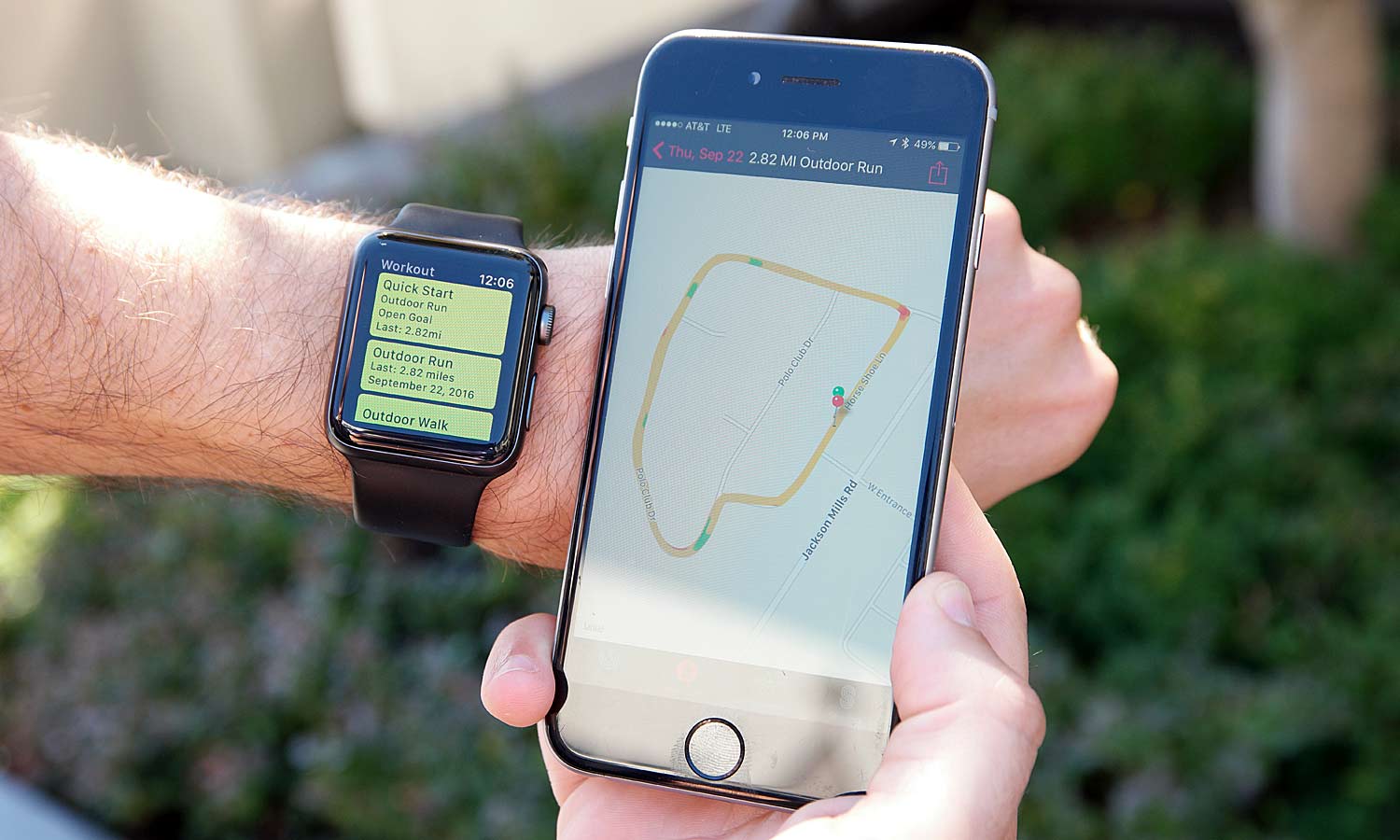
The Workout app is for more serious fitness buffs, who can use it set goals and monitor real-time stats. This app also provides encouraging messages during your workout and shows a summary of your vitals after each session.
Notifications
Another big Apple Watch draw is its ability to display notifications from your apps on your wrist. If you don't want notifications from every app showing up, you can configure them on an app-by-app basis in the Notifications section of the Watch app on the iPhone.
Even better, though, are Actionable Notifications, which let you react to your alerts with predefined functions set by the app. For instance, if you've left your lights on at home, a smart home app can alert you and give you the option to switch the lights off, without requiring you to open the app. Likewise, text-message alerts can let you respond to an alert via a predefined phrase or dictation, or by using the Scribble feature to write letters with your finger.
Apple Pay
Thanks to the built-in NFC chip, the Apple Watch supports contactless payments via Apple Pay. This brings the convenient digital-wallet feature to phones without NFC, such as the iPhone 5 and 5s.
Apple Pay is accepted at hundreds of thousands of stores in the U.S., including Whole Foods, Duane Reade, Bloomingdale's, McDonald's, Subway and Walgreens. A full list of supporting merchants appears at Apple's website.
Other Functions
Couch potatoes may never have to leave their comfy thrones again, thanks to remote-control functions built into the Apple Watch. You can skip through music on your iPhone or iTunes music library, navigate your Apple TV, enable Do Not Disturb and Airplane modes on your iPhone, or turn the smart lights in your house or off — all from your wrist. The watch even acts as a remote viewfinder and trigger for your iPhone's camera. If you are separated from your phone, you can use your watch to ping and locate it.
With Passbook integration, you can quickly pull up your plane tickets, boarding passes and loyalty cards without having to get out your phone. The app also alerts you when your discount or loyalty cards can be used.
You can send and receive messages and calls, but Apple also created cool new ways of interacting with your friends through its Digital Touch features, accessible via the Messages app. Share sketches by doodling on the screen, or send your heartbeat. Your recipient will get buzzed on his or her wrist in time with your pulse. You can also share voice messages with friends, and Tap sends silent, gentle vibrations to your contacts when you touch the display.
How does the Apple Watch work?
In addition to a touch-screen interface that lets you tap and swipe your way through the system, the Apple Watch offers several new means of interaction. There's a Digital Crown knob on the right edge that you can turn to zoom or scroll through options, or press to return to the main screen.
While you'll still swipe and tap on the screen to navigate, Apple has also introduced a new method of input called Force Touch. The device will register how hard you are pressing on the screen and trigger an action or offer a menu of additional options. It's sort of like a right click on a computer mouse or a hard press on the screen of an iPhone 6s or later.
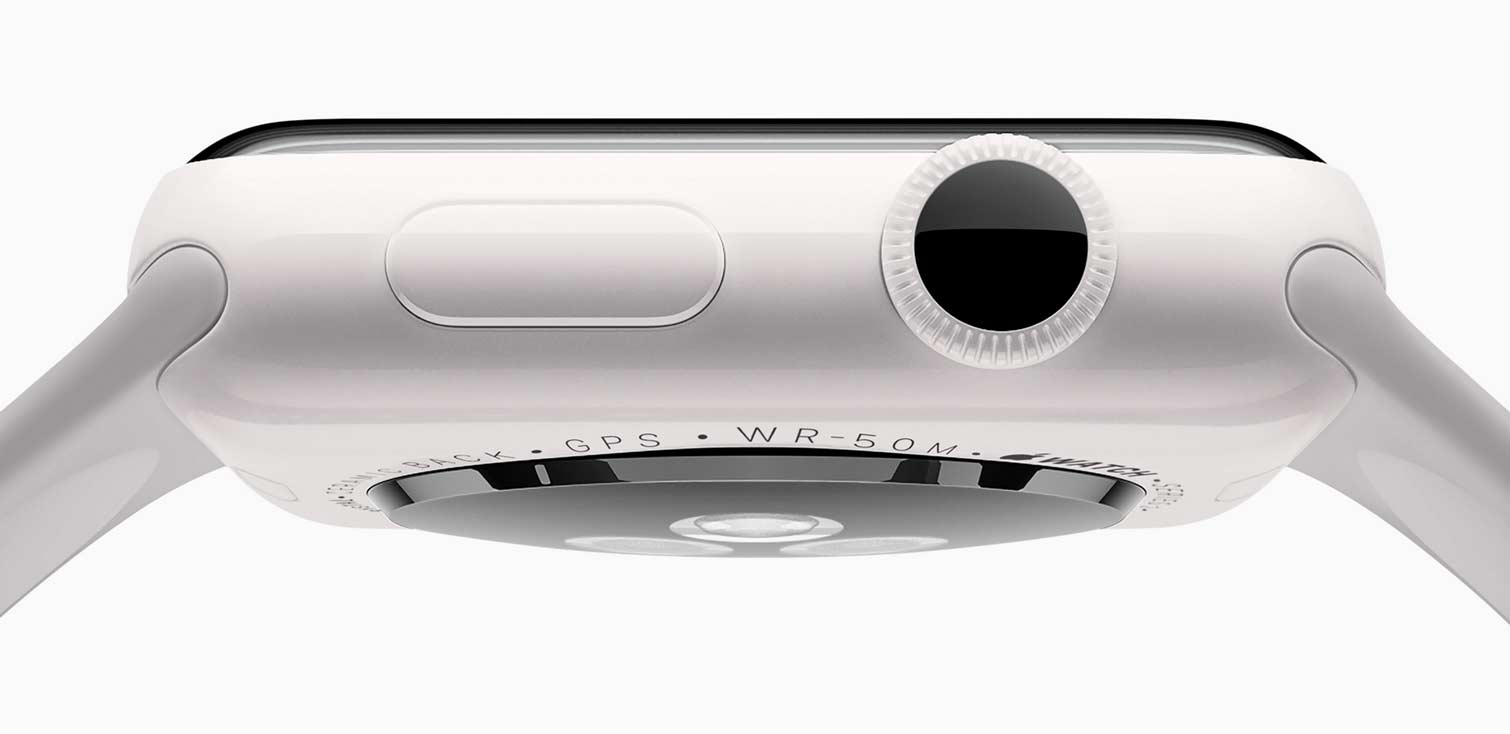
There's also a side button below the Digital Crown that you can press once to bring up the Dock of frequently and recently used apps or press twice to summon Apple Pay.
For hands-free control, you can interact with the Apple Watch via Siri. Apple's voice-powered digital assistant can take dictation to compose messages, find the nearest coffee shop or tell you the next event on your schedule.
With the companion Watch app on the iPhone, you can customize your watch faces, choose your watch's app-icon layout, control notification preferences and much more. Many of the options that are available in the Settings app on the watch can also be adjusted via the Watch app on your iPhone. You can also adjust fitness features in the Watch app on iOS, such as toggling goal notifications and Stand Reminders" or setting how often you get an activity progress update.
The Watch app also lets you adjust security features, such as choosing to unlock the watch when you unlock your iPhone and setting the four-digit pass code for the timepiece. The Apple Watch can also be set to wipe itself after 10 inaccurate password attempts.
How long does the Apple Watch's battery last?
Apple says its watch should last 18 hours on a charge, and our tests suggest that's a fair estimate. When we reviewed the Apple Watch, we still had plenty of charge left after a full day of use. Still, you're going to have to pop the watch onto its magnetic charger every day if you don't want to run out of juice at an inopportune moment.
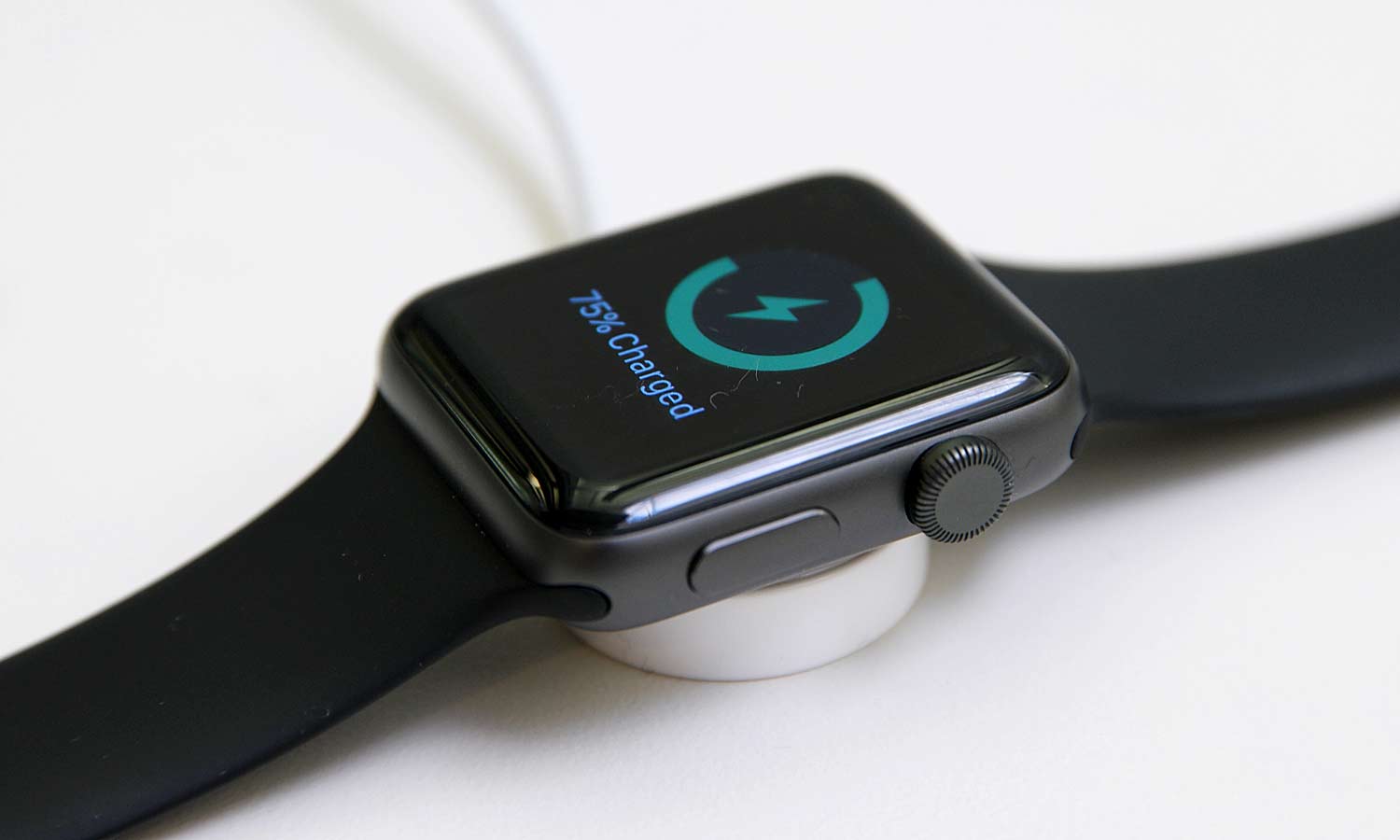
Note that the Apple Watch has a Power Reserve mode, in which the device will show you the time and nothing else, in order to conserve battery life. You're prompted to go into Power Reserve mode when you've got less than 10 percent of battery life left, though you also have the option of turning this mode on manually by swiping up on the watch's face to bring up Control Center, tapping the battery percentage and then sliding the Power Reserve control.
What apps does the Apple Watch run?
Of course, a truckload of Apple apps are available for the watch interface, including Activity, Calendar, Workout, Maps, Passbook, Music, Apple TV, Remote Camera, Stopwatch, Timer, Alarm, Stocks, Weather, Photos, Siri and Settings.
A number of third-party app makers have come out with Apple Watch-specific applications, which you can add via the Apple Watch app on your iPhone. Instagram will let you see your friends' latest photos and like or leave emoji comments. You'll also get notifications of your Instagram likes and comments. The American Airlines app will remind you when it's time to head to the airport or start boarding, and will provide connecting-gate information and gate-change updates. Book a ride via Uber, or reserve a bike for your Equinox class, all from your wrist. The Deadline app will purportedly tell you when you're going to die. Talk about a death watch.
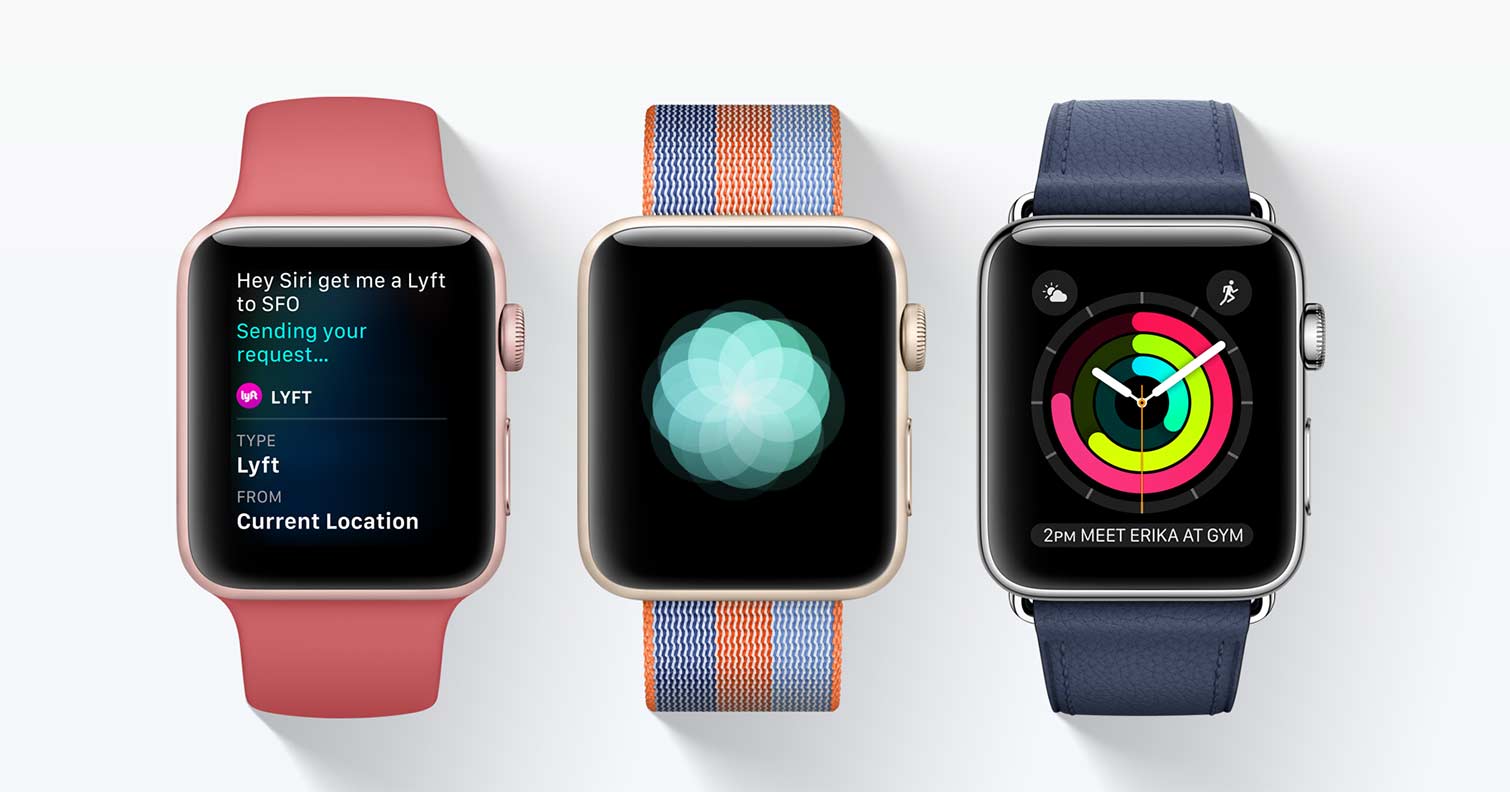
Other major apps for the Apple Watch include Facebook, Twitter, Nike, WeChat, OpenTable, Shazam, MLB.com at Bat, Nike+ Running, Shazam and BMW. Many common iOS apps include watch companion apps; in the Watch app on your iPhone, you can enable Automatic App Install under the General settings to have Apple Watch apps automatically installed when you get a new app for your iPhone.
Apple Watch vs. the Competition
Several other brands are already making waves in the smartwatch arena, including Apple's biggest rivals, Samsung and Google. While Google's focus has been on its Android Wear operating system for wrists, Samsung has pushed through several smart bands under the Gear brand. The $180 Gear Fit 2 is a fitness-oriented tracker, while the $350 Gear S3 frontier is a 4G-enabled smartwatch that can run on its own without being tethered to a phone.
Major electronics companies have jumped on the Android Wear bandwagon. That includes LG, which offers various models of the LG Watch Sport and LG Watch Style, and Motorola, which is selling the Moto 360. These watches mostly cost between $280 and $360, and need to be connected to an Android device to work.
MORE: Best Smartwatches for the Money
Other wearable devices, such as Fitbit's $250 Surge, have more of a fitness focus but also pack smartwatch features. People who want more dedicated health trackers may prefer these wearables, even as Apple seems to be putting more of a focus on refining the Apple Watch's fitness and health-tracking features.
After an initial glut of smartwatch products, the field has narrowed somewhat. Microsoft discontinued its $200 Band in October 2016 and stopped development on that line of devices. One of the earliest smartwatch makers, Pebble, shut down in December 2016, selling its intellectual property to Fitbit. The Apple Watch still appears to be the product to beat.
What accessories are available for the Apple Watch?
As with the iPhone and iPad, both Apple and third-party accessory makers have come out with a variety of add-ons for the Apple Watch, including bands that you can attach to the device as well as accessories such as charging docks and screen protectors.
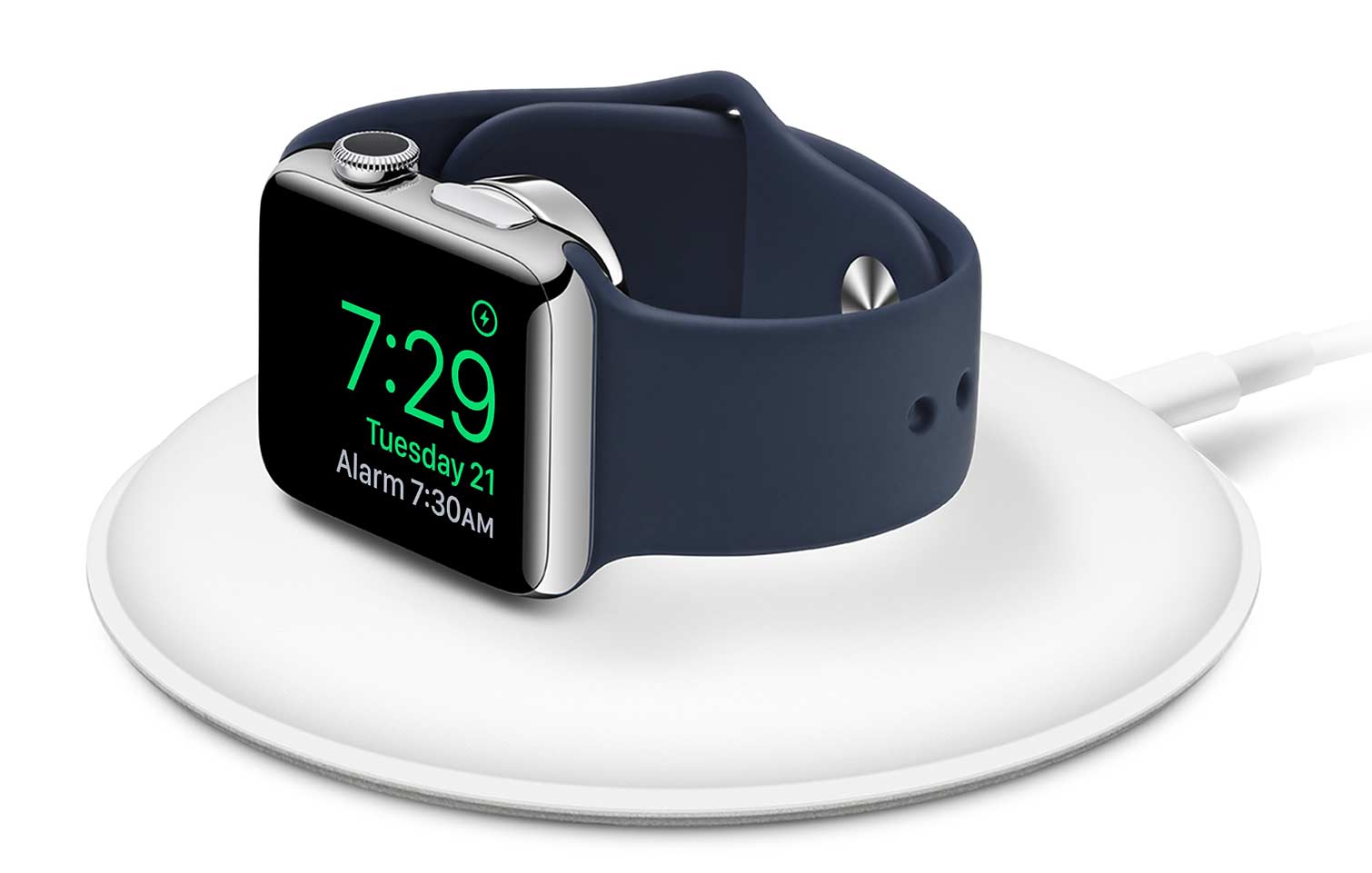
Apple is imposing some order on watch-compatible accessories by launching a Made for Apple Watch program. As the company did with its other mobile devices, Apple is issuing guidelines for accessory makers to produce approved bands for the Apple Watch.
What's next for the Apple Watch?
With the release of the Series 2 models, Apple established that it will be updating the Apple Watch from time to time, if perhaps not quite as regularly as it trots out iPhone updates. But the jury's still out on what a future Apple Watch might include.
However, that hasn't stopped the Apple Watch rumor mill from kicking into gear, with speculation that a third version of Apple's smartwatch could arrive as soon as this fall. (Apple could also hold off on a watch update until 2018, if the company matches the length of time between the first Apple Watch's debut and the release of the Apple Watch Series Two.)
As for hardware advances, it's long been rumored that Apple could add a FaceTime camera to its watch, though holding your wrist up to your face is hardly a comfortable position for an extended period of time. The Apple Watch could also add its own cellular connection, so the device could work totally untethered from the iPhone. Such an addition, however, would not only add to the cost, but also potentially drain the battery life faster. (It would also add pricing complexity with cellular carriers.) Still, other smartwatches — notably the Samsung Gear S3 — have started to add built-in LTE. Apple could also focus on improving battery life by turning to micro-LED screens for its watch.
On the software side, Apple has already released two major updates to the Apple Watch operating system, adding features like native apps for the watch and interface overhauls. The recent watchOS 3.2 update adds a Theater Mode that you can enable while in, say, the movies. It prevents the display from lighting up when you move your wrist. And watchOS 4 may not be far off, perhaps appearing at Apple's Worldwide Developers Conference this summer, though there's little to no suggestion of what that OS update might include.
Photo credit: Samuel Rutherford/Tom's Guide
Apple Watch Guide: Page by Page
Sign up to get the BEST of Tom's Guide direct to your inbox.
Get instant access to breaking news, the hottest reviews, great deals and helpful tips.
Dan Moren is the author of multiple sci-fi books including The Caledonian Gamibt and The Aleph Extraction. He's also a long-time Mac writer, having worked for Macworld and contributed to the Six Colors blog, where he writes about all things Apple. His work has also appeared in Popular Science, Fast Company, and more
-
Ik_So I also believe that Pebble Steel can be compared with Apple Watch. It may not have very fancy specs, but it is practical and cheap! http://versus.com/en/apple-watch-vs-pebble-steelReply -
jdew Whilst the Apple watches might be a great improvement from different view points, I prefer the good, old, traditional watches. Just because you can replace something with newer technology doesn't mean you should. Just looks tacky!Reply -
jdew I think the Apple watch will be an excellent product to have, it allows you to connect to your phone, think of all the problems it could fix. An example if someone cannot find their phone in their house, but there watch starts ringing, it allows the individual to answer the call without any problems or the phone being in front of themReply -
JRB15 It is a lot better than carrying around a phone, whereas a phone is easy to lose because you put your phone down in loads of places. A watch is always on your wrist and you are less likely to lose it.Reply -
CherlynnLow Reply15270977 said:I believe that the Apple Watch is a stepping stone for further technology.
oh i agree! And JRB15 is right about the watch form in general, much more convenient - it's always on you! the Apple version will be interesting - it seems very full-featured. -
spdragoo @JRB15 and @jdew, that assumes that you remember to put your watch on in the morning. Sleeping with a watch on is about as comfortable as sleeping with your glasses on. So if you're likely to forget to bring your phone with you, you're just as likely to forget to put your watch on. Not to mention that, since it needs the Bluetooth connection, it won't help if your phone is out of range (i.e. left it at your desk at work, left it in the car in the garage, left it at a friend's house, etc.).Reply
The biggest downside is that, at $349, you get a universal remote that has a tiny screen & needs to be near your phone for the more useful things. If it was a stand-alone device that didn't require the phone connection, I might see the usefulness of it...but not the way it's described. -
ammaross ReplyIt is a lot better than carrying around a phone, whereas a phone is easy to lose because you put your phone down in loads of places. A watch is always on your wrist and you are less likely to lose it.
Except the iWatch requires a tether to the iPhone, so has to remain within Bluetooth range (which may be rather limited since it is the BT LP tech).
